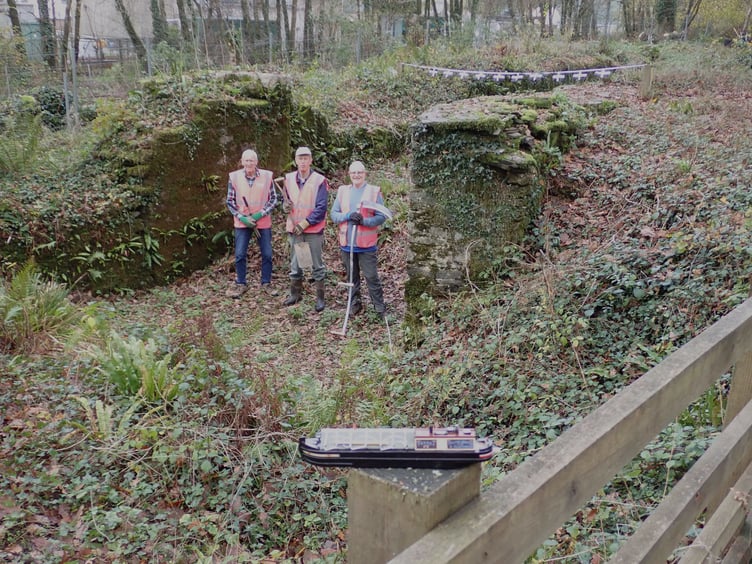The canal, officially opened in 1828, was built to move limestone to valley limekilns and bring sea-borne nutrients inland to local farms. It later became a crucial route for the transport of copper ore from Caradon Hill to Looe harbour for shipment to South Wales.
As trade increased – along with coal for the mines and quarried granite – the canal became overwhelmed and was replaced in 1860 by the Liskeard and Looe Railway. That line, linking directly with the Liskeard and Caradon Railway, removed the need to transfer goods between boats and wagons. It survives today as the Looe Valley Line.
Newly uncovered research shows by mid-November 1825, a section of the canal was sufficiently advanced for a trial journey. A boat was launched at Lamellion and sailed to Lock 20 near Lodge Farm level crossing.
It likely entered the waterway at Lock 23, behind the platform at Coombe Junction, before passing through Lock 22, whose remains can still be seen beside the footpath at Coombe House, and then Lock 21, where volunteers have carried out conservation work for five years.
To mark 200 years since this early voyage, volunteers held a celebration at Lock 21. Those attending were Brian Oldham, President of the Liskeard Old Cornwall Society and Bard of Cornwall; volunteer coordinator Peter Murnaghan; and Iain Rowe of Caradon Archaeology, who brought a model boat to symbolise the historic sail.
Lock 21 is one of the few surviving “dry locks” on the route. When the Liskeard link railway was built in 1901, surplus stone and rock waste were dumped into the abandoned chamber, an act that preserved the structure. Today, this little-known piece of transport history remains visible from both the roadside and the train to Looe.





Comments
This article has no comments yet. Be the first to leave a comment.